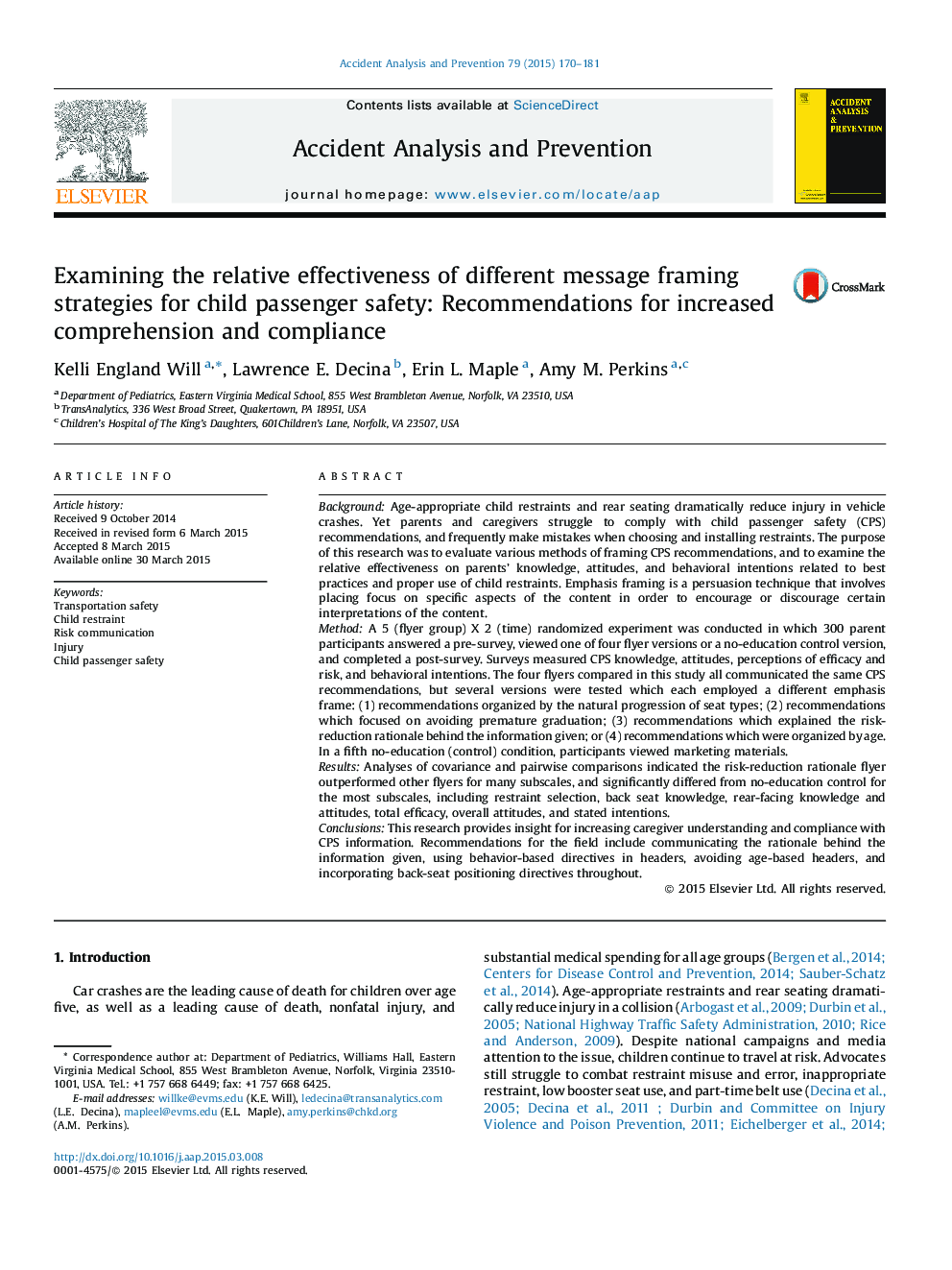| کد مقاله | کد نشریه | سال انتشار | مقاله انگلیسی | نسخه تمام متن |
|---|---|---|---|---|
| 572176 | 1452918 | 2015 | 12 صفحه PDF | دانلود رایگان |
• Four child passenger safety flyers using different emphasis frames were compared.
• Flyer frames emphasized seat types, premature graduation, risk reduction, or age.
• Parents completed pre–post surveys measuring knowledge, perceptions, and intentions.
• Emphasizing the risk-reducing reasons behind CPS recommendations was most effective.
• Using action-oriented headers instead of age-based headers is also recommended.
BackgroundAge-appropriate child restraints and rear seating dramatically reduce injury in vehicle crashes. Yet parents and caregivers struggle to comply with child passenger safety (CPS) recommendations, and frequently make mistakes when choosing and installing restraints. The purpose of this research was to evaluate various methods of framing CPS recommendations, and to examine the relative effectiveness on parents’ knowledge, attitudes, and behavioral intentions related to best practices and proper use of child restraints. Emphasis framing is a persuasion technique that involves placing focus on specific aspects of the content in order to encourage or discourage certain interpretations of the content.MethodA 5 (flyer group) X 2 (time) randomized experiment was conducted in which 300 parent participants answered a pre-survey, viewed one of four flyer versions or a no-education control version, and completed a post-survey. Surveys measured CPS knowledge, attitudes, perceptions of efficacy and risk, and behavioral intentions. The four flyers compared in this study all communicated the same CPS recommendations, but several versions were tested which each employed a different emphasis frame: (1) recommendations organized by the natural progression of seat types; (2) recommendations which focused on avoiding premature graduation; (3) recommendations which explained the risk-reduction rationale behind the information given; or (4) recommendations which were organized by age. In a fifth no-education (control) condition, participants viewed marketing materials.ResultsAnalyses of covariance and pairwise comparisons indicated the risk-reduction rationale flyer outperformed other flyers for many subscales, and significantly differed from no-education control for the most subscales, including restraint selection, back seat knowledge, rear-facing knowledge and attitudes, total efficacy, overall attitudes, and stated intentions.ConclusionsThis research provides insight for increasing caregiver understanding and compliance with CPS information. Recommendations for the field include communicating the rationale behind the information given, using behavior-based directives in headers, avoiding age-based headers, and incorporating back-seat positioning directives throughout.
Journal: Accident Analysis & Prevention - Volume 79, June 2015, Pages 170–181
